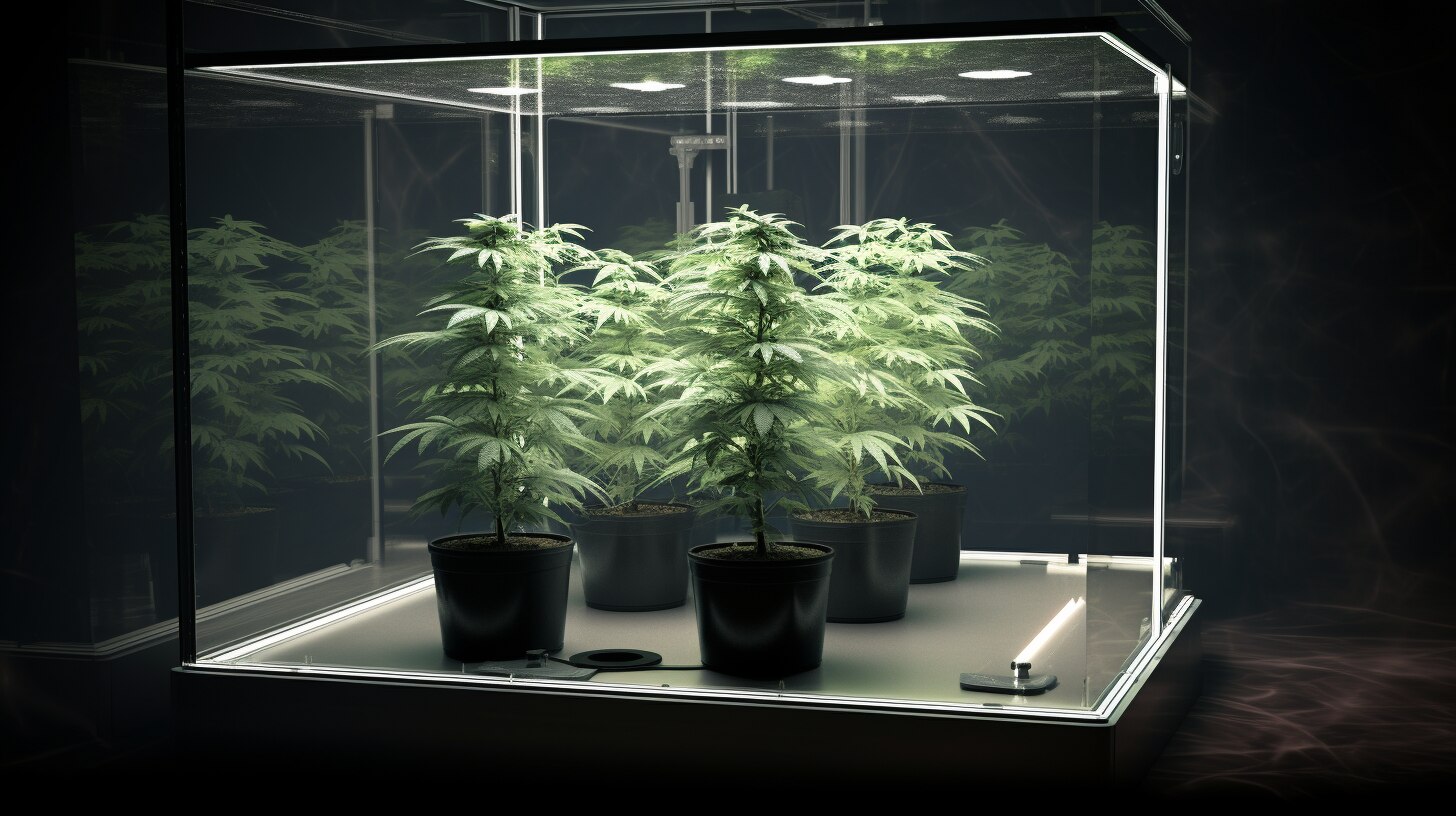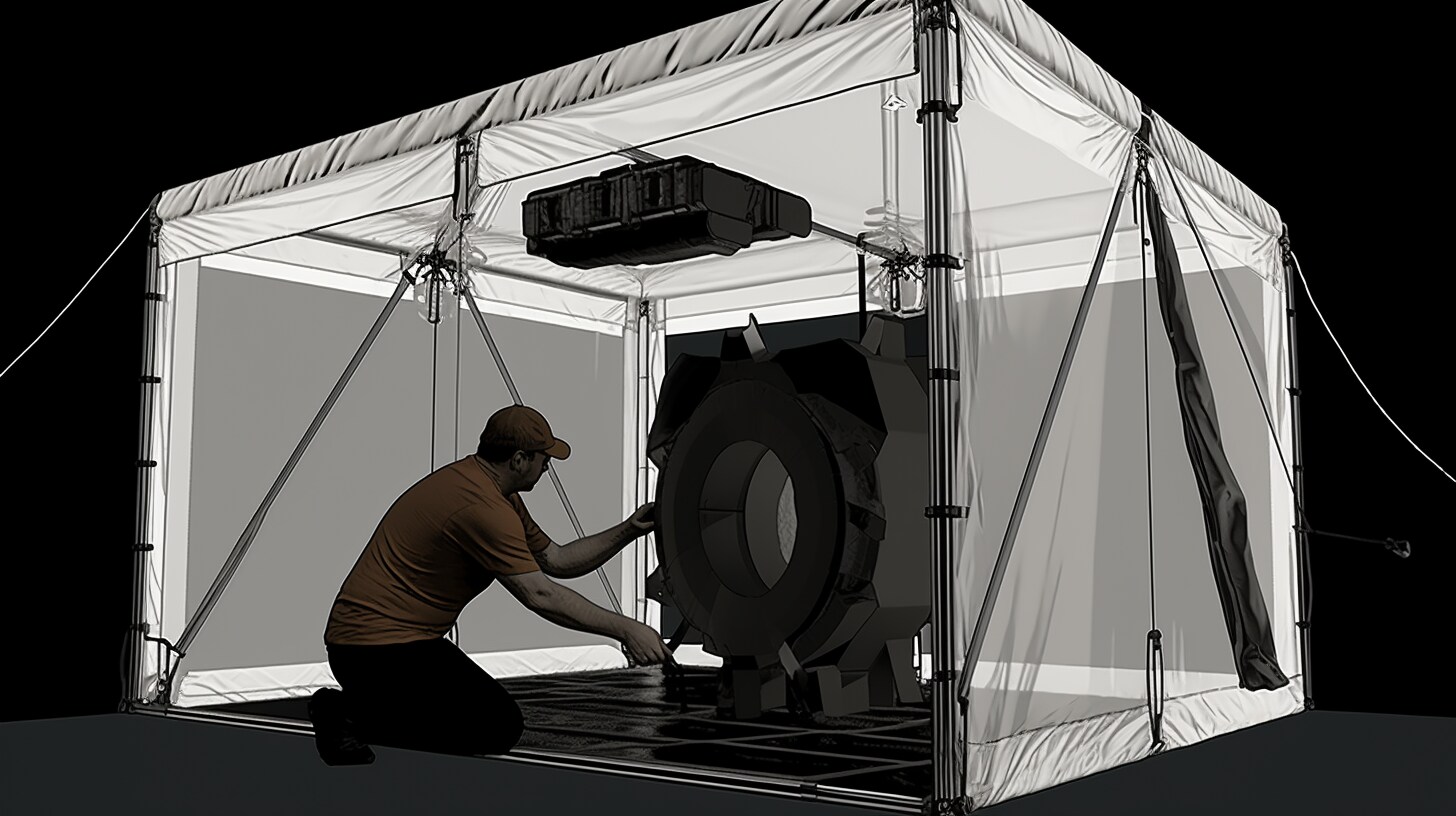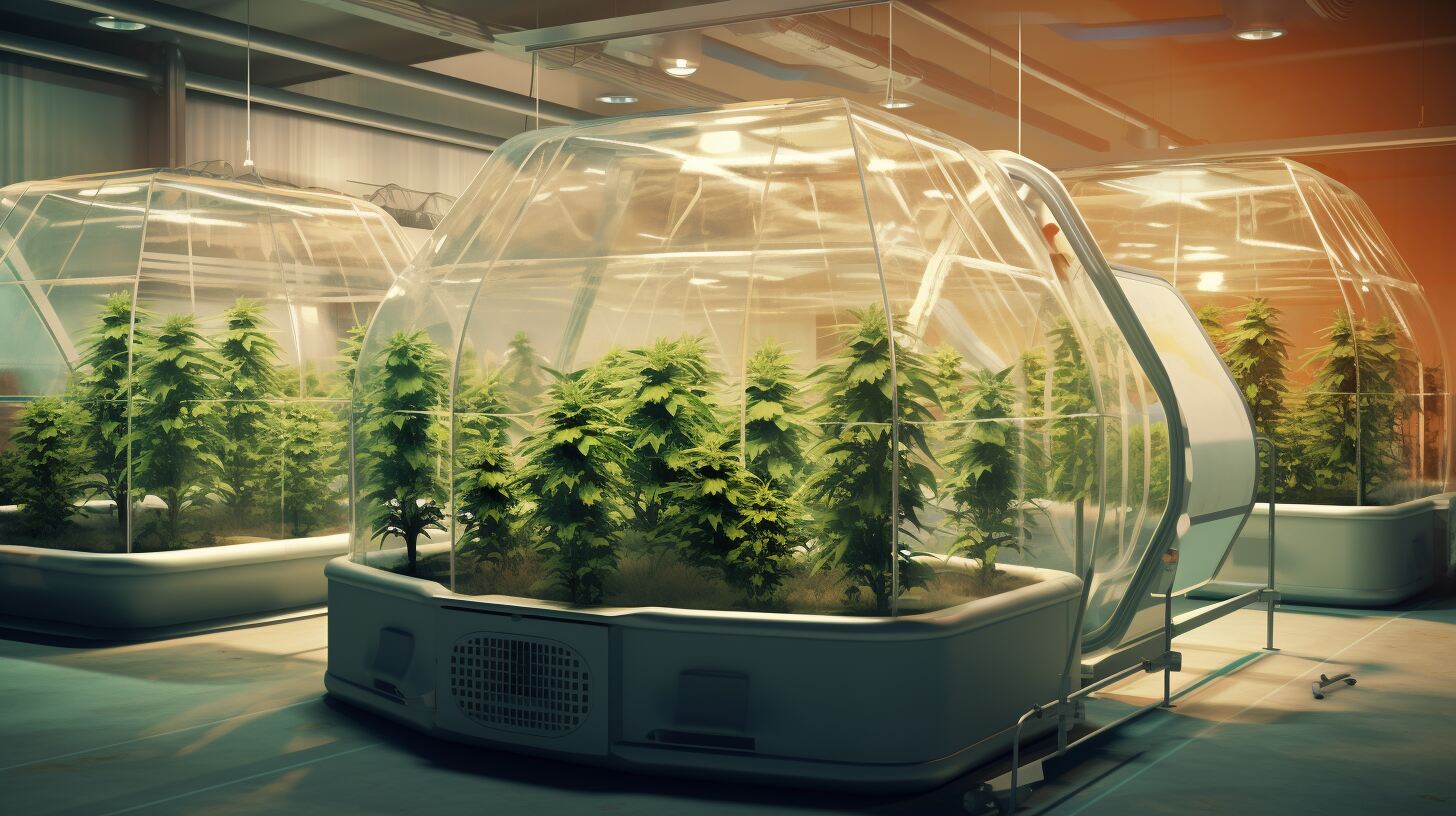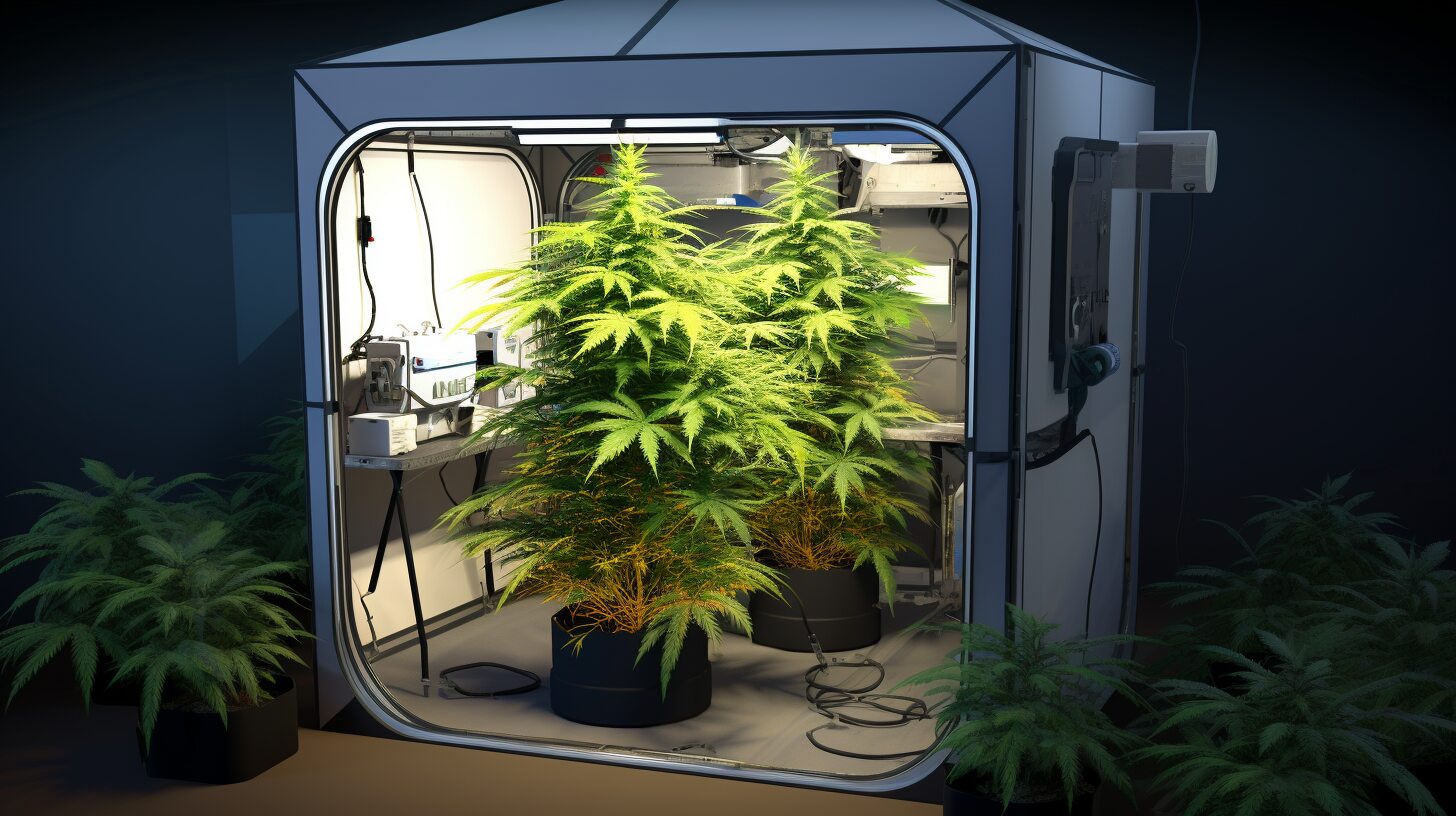Are you looking to start growing weed in the comfort of your own home? You don’t have to worry about pests, limited space, or other environmental issues that can affect outdoor cultivation.
Growing cannabis in a tent allows for control of the environment. This optimizes cultivation conditions and saves space.
This blog post will give you an overview of growing marijuana indoors. It covers setup needs and maintaining optimal temperatures. Get ready for all the information you need to become your own successful at-home cannabis cultivator!
Why Choose Indoor Grow Tents
Indoor grow tents offer a myriad of benefits for both novice and advanced cannabis growers. The tents recreate ideal outdoor conditions for growing cannabis indoors. They are designed to create the perfect environment at home. An indoor grow tent offers growers complete control over factors. These factors include light, humidity, temperature, and ventilation.
Every aspect of the growth cycle, from germination to the flowering stage, can be precisely manipulated inside a grow tent. By adjusting grow lights, humidity levels, temperature controls, and exhaust fans, growers can create the ideal conditions for their cannabis plants. Plus, indoor grow tents often come with waterproof floors and are generally made of light-reflective fabric, enhancing the efficiency of your grow lights.
Different Tent Sizes and Their Uses
Tents come in various sizes, each catering to the different needs of the growers. Here are a few common tent sizes you might consider:
2x2 Grow Tent: Ideal for first-time growers or those with limited space, a 2x2 tent can accommodate 1-2 cannabis plants. It is compact, cost-effective, and perfect for experimenting with different growing techniques.
3x3 Grow Tent: A 3x3 tent is suitable for novice growers planning to cultivate more than a couple of plants. It provides ample space for 2-3 marijuana plants to grow without crowding each other.
4x4 Grow Tent: The 4x4 tent is a popular choice among indoor growers. It can comfortably house 4-6 plants, providing enough space for each plant to grow and flourish.
5x5 Grow Tent and Larger: Larger tents are designed for advanced growers who want to grow a larger number of plants. These tents can accommodate 6 or more cannabis plants, depending on the size of the pots and the plants' canopy.
Tent Kits and Their Advantages
| Grow Tent | Provides controlled environment for plant growth |
| Grow Lights | Ensures optimal light conditions for photosynthesis |
| Carbon Filter | Helps control odor and purify air |
| Exhaust Fans | Maintains air circulation and temperature |
| Humidity Meter | Monitors and helps manage humidity levels |
| Fabric Pots | Facilitates better aeration and plant growth |
| Seeds | Defines the strain of cannabis to be grown |
| Trays | Catches excess water, prevents water damage |
| Temperature Controllers | Maintains optimal temperature for growth and flowering stages |
Setting Up The Grow Tent
Setting up a grow tent is a straightforward process that can be completed within a few hours. Here's a step-by-step guide on how to set up your indoor garden:
Step 1: Choose The Right Spot: Find a suitable spot inside your home that can accommodate the size of your tent and provides easy access to power.
Step 2: Assemble The Grow Tent: Follow the manufacturer's instructions to assemble the tent. Make sure the tent is secure and stable.
Step 3: Install The Exhaust Fan: The exhaust fan should be placed at the top of the tent as hot air rises. Make sure to install it correctly, allowing it to pull the hot air out of the tent efficiently.
Step 4: Hang The Grow Lights: The grow lights are installed inside the tent, usually in the center. The height of the lights can be adjusted as the plants grow.
Step 5: Set Up The Carbon Filter: The carbon filter is essential to control odor and purify the air inside the tent. It can be hung near the exhaust fan.
Step 6: Place The Fabric Pots: Fabric pots can be placed on the tent floor, ensuring enough space between them for the plants to grow without overcrowding.
Step 7: Install The Humidity Meter: The humidity meter can be hung or placed inside the tent in clear view. This will help you monitor the humidity levels and adjust accordingly.
Step 8: Setup Temperature Controllers: Temperature controllers are crucial to maintain the optimal temperatures for each stage of the cannabis plant's growth cycle. Make sure they are properly set according to your particular strain needs.
Step 9: Plant The Seeds: Finally, plant your cannabis seeds in the fabric pots. Make sure to follow the best practices for seed planting to ensure healthy plant growth.
Read More: How To Grow Weed With Reverse Osmosis Water
Indoor Cannabis Cultivation: The Growth Cycle
We will now explore the cannabis plant growth cycle in detail. It includes the vegetative and flowering stages. Indoor growers must understand these crucial stages. Each stage has unique light, temperature, and humidity demands. These demands can significantly impact the health and yield of marijuana plants.
The Vegetative Stage
The vegetative stage is the period of growth for cannabis plants. It happens after seeds germinate and before flowering begins. During this phase, the plant focuses on developing a strong root system and robust and leafy green foliage.
Environment
In the vegetative stage, cannabis plants prefer a warm environment. To create the best environment for your plants, maintain a temperature of 70-85 degrees Fahrenheit during the day. At night, make it around 10 degrees cooler. Humidity levels should be kept a little higher during this stage, usually between 40%-70%.
Light Cycle
Lighting plays a crucial role in cannabis growth, especially in indoor cultivation. During the vegetative stage, cannabis plants need plenty of light, at least 18 hours per day. This will allow them to carry out photosynthesis more effectively, resulting in vigorous growth.
Growth Conditions
During the vegetative stage, the growth of cannabis plants is affected by temperature, light, and other conditions. Regular watering is essential, but take care not to overwater as it may lead to root rot. The plant needs a nutrient-rich growth medium, either soil or hydroponic solution. The medium should contain plenty of nitrogen to support rapid foliage growth. Ensure that the grow tent is well-ventilated with an exhaust fan to keep the air fresh and prevent excessive heat buildup from the grow lights.
The Flowering Stage
The flowering stage in cannabis cultivation is when your plants start to produce the buds that are eventually harvested. This phase is critical for growers. Plants are vulnerable to environmental stresses. Slight differences in conditions greatly impact yield.
Light Adjustments
During the flowering stage, the light cycle changes from the 18/6 hour light/dark schedule of the vegetative stage to a 12/12 hour light/dark schedule. This change signals the plants to start producing buds. Grow lights should be adjusted to provide a warmer color temperature, mimicking the autumn sun.
Temperature Adjustments
Temperature control becomes even more critical in the flowering stage. The ideal temperature range during the day (or light period) is 68-77 degrees Fahrenheit. Nighttime temperatures should be 10-15 degrees cooler than daytime temperatures. The dark period is when this occurs. Too high temperatures can hinder bud development and make your plants susceptible to diseases.
Humidity Adjustments
Humidity levels need to be lowered during the flowering stage. High humidity can lead to bud rot, a common and serious issue during flowering. Maintaining a relative humidity of 40-50% in the early to mid-flowering stage is important. Gradually reduce the humidity to around 30-40% towards the end to prevent problems.
Managing Humidity and Smell During The Entire Grow
Managing humidity and odor during the entire growing cycle is pivotal for a successful indoor garden. Implementing a good air filtration system is crucial. It helps control humidity and eliminates unwanted smells.
Humidity Control
Humidity levels fluctuate during the growth cycle and must be adjusted accordingly. To manage humidity effectively, use a dehumidifier or humidifier in your grow tent. Choose based on growth stage and humidity levels. Additionally, good ventilation can also play a vital role in maintaining proper humidity. An exhaust fan will not only regulate temperature but also help in reducing humidity levels.
Smell Control
Indoor cannabis cultivation can produce strong scents, particularly during the flowering stage. To manage this, installing a high-quality carbon filter is recommended. The carbon filter works by trapping odor molecules, removing them from the air before it's exhausted out of the tent. AC Infinity carbon filters are popular among cannabis growers. They are known for being efficient and durable.
Harvesting: Signs and Techniques
The culmination of your cannabis cultivation journey is the harvesting stage. Knowing when and how to harvest your marijuana plants can significantly impact the quality and potency of your buds.
Signs That Your Cannabis Plants Are Ready for Harvest
One of the major signs that your marijuana plants are ready for harvest is the color of the trichomes. The trichomes are tiny, sticky, crystal-like structures that form on the buds and leaves during the flowering stage. Initially, the trichomes are clear, but as the plant matures, they slowly become milky white and, eventually, amber. When about 70% of the trichomes have turned milky white, it's usually a good time to start harvesting.
Another sign is the changing color of the pistils or hairs. During the flowering stage, new white hairs will keep on growing. When around 60%-70% of these hairs turn dark and curl in, it's another sign that the plant is ready for harvest.
Harvesting Techniques
Harvesting your cannabis plants involves several steps. First, you'll need to 'flush' your plants. To improve taste, stop nutrient supply and water plants only. Do this for a few days to a week before harvest. This removes nutrient residues from your buds.
Next, the actual harvesting begins. This usually involves cutting the plant at the base and removing the larger fan leaves. Then, the plant is hung upside down in a dark, cool, and humid-free room to dry.
Once the plants are dry, they should be ‘cured.’ This involves placing the buds in airtight jars and storing them in a dark, cool place. The jars should be opened once a day for a week to allow moisture to escape and fresh air to enter. Curing can take two weeks to a month and helps to further enhance the quality and flavor of your buds.
Handling cannabis harvesting may seem overwhelming for beginners. However, with patience and observation, you can master it. Soon, you'll enjoy the results of your hard work.
Read More: How To Dry Buds Without Hanging
Tips and Tricks for Indoor Growers
Growing cannabis plants indoors can be a rewarding hobby. It can also be a profitable business. However, it requires knowledge, patience, and attention to detail. Here are some useful tips and tricks for indoor growers:
Choose the Right Strains: Not all cannabis strains are created equal. Some strains are better suited for indoor growing than others. Do your research and pick strains that are known to thrive in indoor environments.
Invest in a Quality Grow Tent: A good quality grow tent can make a significant difference in your cannabis cultivation. Choose a tent that is made of sturdy, light-reflective fabric, has waterproof floors, and multiple entries/exits for easy access. The size of the tent should be appropriate for the number of plants you intend to grow and the space you have available.
Master Your Lighting: Grow lights are a critical aspect of indoor cannabis cultivation. You need to understand the light requirements for each stage of growth and adjust the light cycles and intensity accordingly. Also, ensure that your lights cover the entire canopy of your plants. Too much or too little light can affect plant health and yield.
Manage Your Climate: Control of temperature and humidity is crucial in an indoor grow space. Humidity levels should be kept high in the vegetative stage and then gradually decreased during the flowering stage. During the vegetative stage, keep the temperature around 70-85 degrees Fahrenheit. In the flowering stage, make it slightly cooler.
Keep Your Grow Space Clean: Cleanliness is key in an indoor grow environment. Regularly clean your grow tent and equipment to prevent pests and diseases. Also, remember to routinely check your plants for signs of pests or disease.
Proper Nutrient Management: Cannabis plants require specific nutrients for healthy growth. A cannabis-specific nutrient line provides essential nutrients for plants. High-quality usage is recommended. Remember to follow the manufacturer's instructions for adjusting nutrient levels. Adjust the nutrient levels based on the stage of growth.
Read More: Cannabis LandraceImplementing these tips and tricks can help you achieve a successful harvest. Remember, growing cannabis is as much an art as it is a science. With time, patience, and practice, you can refine your skills and grow high-quality cannabis right in your own home.
Frequently Asked Questions
Are grow tents worth it for weed?
Absolutely, grow tents are significantly beneficial for cultivating weed indoors. They create a controlled environment that tailors to plant needs. This increases the chances of a successful, healthy yield. Moreover, they provide a discreet, space-efficient solution and help in odor and light containment.
What are the basics of a grow tent?
A grow tent has a strong frame and reflective interior fabric. It also has adjustable intake and exhaust vents and waterproof floors. It may also have supports for hanging lights and fans, and some even feature viewing windows. Essential elements inside the tent include grow lights, an exhaust fan, a carbon filter for odor control, and a system for maintaining suitable humidity and temperature levels.
How big of a grow tent do I need for weed?
The size of your grow tent should depend on how many cannabis plants you intend to grow and the available space in your home. As a rule of thumb, consider that a 2x2 foot tent can accommodate 1 to 2 plants, a 3x3 foot tent 2 to 4 plants, and a 4x4 foot tent 4 to 6 plants. Keep in mind that each plant will need sufficient space to grow without crowding the others.
Should I get a 2X2 or 4X4 grow tent?
The choice between a 2x2 or 4x4 grow tent depends on your specific needs and available space. If you're a beginner or have limited space, a 2x2 tent may be more suitable. However, if you plan to expand your garden in the future or have more space to spare, a 4x4 grow tent can provide more flexibility and growth potential.
Creating the Perfect Environment for Your Cannabis Plants
Creating the perfect environment for your cannabis plants is an artful blend of science and patience. Careful choices are involved in creating an indoor garden. These choices include selecting the right strains and grow tent. Managing the light cycles, temperature, and humidity levels is also important.
Maintaining a clean grow space is essential for optimal conditions. Adopting a proper nutrient management strategy is also key. While exhaust fans and carbon filters play a vital role in odor control, remember that, above all, growing cannabis is a learning process.
Indoor growers gain experience and insights with each cultivation cycle. These can guide them in fine-tuning their approach. Embrace the journey. Over time, create the perfect oasis for your cannabis plants. This will lead to a bountiful, high-quality harvest.


 Français
Français 



